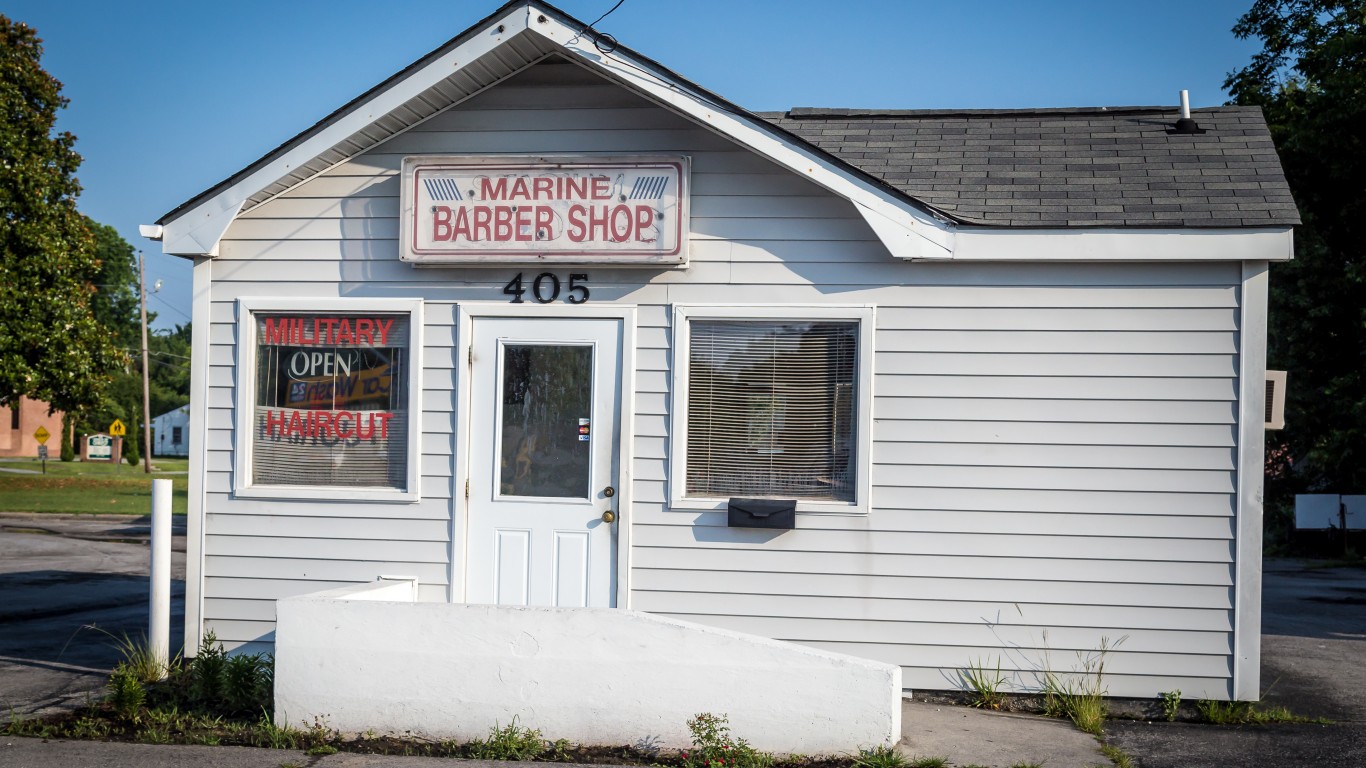
The share of Americans working from home skyrocketed during the pandemic. A recent Gallup study found that 45% of full-time workers in the United States – and two-thirds of white-collar workers – were doing their job remotely at least some of the time.
The shift is proving to be a positive development for millions of Americans. Gallup reports that over 90% of remote workers hope that the trend continues after the pandemic, citing the lack of commute time as the chief benefit. (Here is a look at the state where the most people are working from home.)
According to the U.S. Census Bureau, the average commute time in the United States is 26.9 minutes. For those who travel to and from work every Monday through Friday, this translates to about 4.5 hours per week, or nearly 10 days a year.
Of course, commute times vary from person to person, but in some parts of the country, workers who are still commuting tend to have far less travel time than others. Using census data, 24/7 Wall St. identified the metropolitan area with the shortest commute in every state.
Among the metro areas on this list, average commute times range from from as little as 16 minutes to no more than 28 minutes. In most metro areas on this list, the average commuter spends at least a day and a half less time commuting annually than the average commuter across the state as a whole.
In most metro areas on this list, the share of commuters driving themselves to and from work is higher than the comparable statewide average, and the share of commuters using public transit is below the state average. In most cases, public transportation is less direct than simply driving from door to door, adding to overall commute time. Here is a look at the cities where people lose the most time driving each year.
Click here to see the metro area with the shortest commute in every state
Click here to read our detailed methodology

Alabama: Huntsville
> Avg. commute time (minutes): 22.8 (Alabama: 25.2)
> Share of commuters driving alone: 86.0% (Alabama: 84.9%)
> Share of commuters carpooling: 6.1% (Alabama: 8.3%)
> Share of commuters using public transit: 0.2% (Alabama: 0.3%)
> No. of metros considered in ranking: 12
[in-text-ad]

Alaska: Fairbanks
> Avg. commute time (minutes): 19.1 (Alaska: 18.9)
> Share of commuters driving alone: 74.1% (Alaska: 68.1%)
> Share of commuters carpooling: 14.2% (Alaska: 12.1%)
> Share of commuters using public transit: 0.8% (Alaska: 1.2%)
> No. of metros considered in ranking: 2
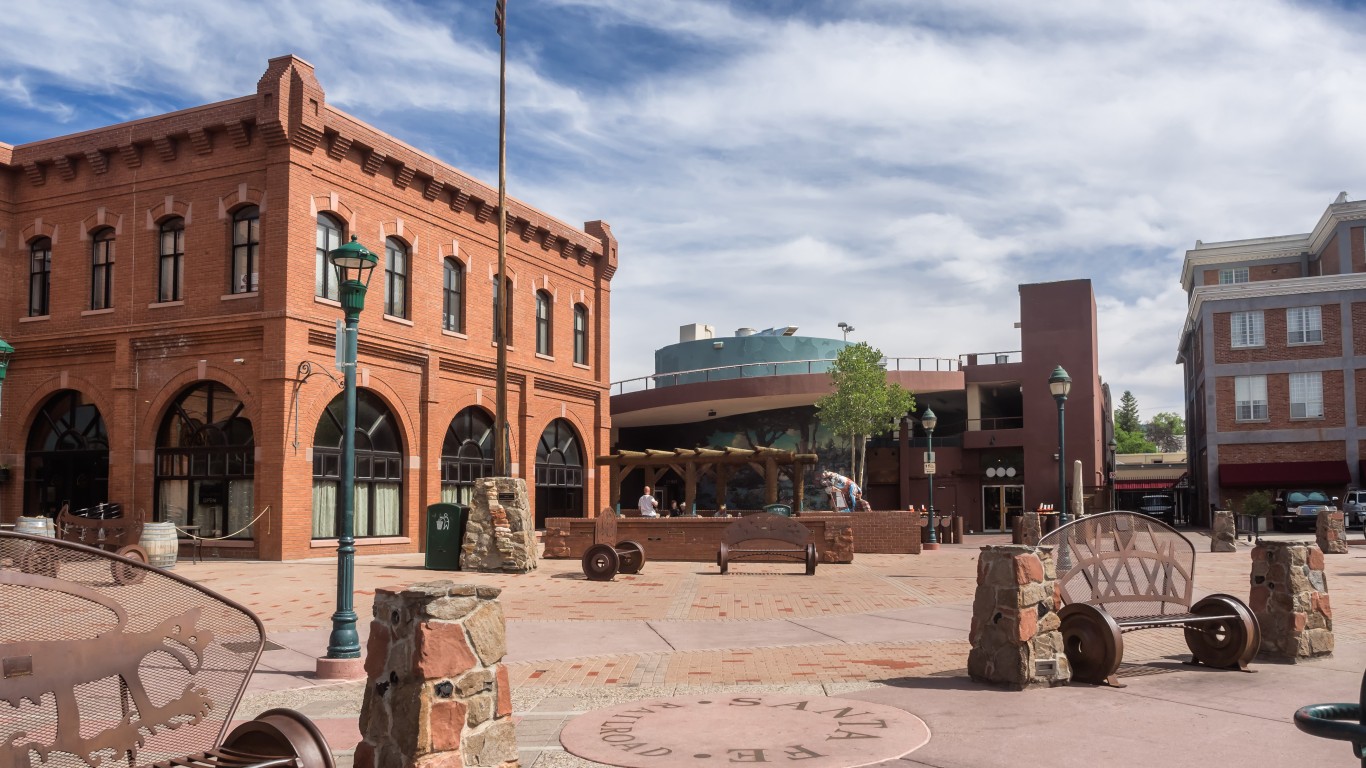
Arizona: Flagstaff
> Avg. commute time (minutes): 18.6 (Arizona: 25.8)
> Share of commuters driving alone: 69.9% (Arizona: 74.5%)
> Share of commuters carpooling: 10.6% (Arizona: 10.7%)
> Share of commuters using public transit: 1.6% (Arizona: 1.6%)
> No. of metros considered in ranking: 7

Arkansas: Jonesboro
> Avg. commute time (minutes): 20.0 (Arkansas: 21.8)
> Share of commuters driving alone: 83.3% (Arkansas: 82.3%)
> Share of commuters carpooling: 10.9% (Arkansas: 10.2%)
> Share of commuters using public transit: 0.1% (Arkansas: 0.3%)
> No. of metros considered in ranking: 6
[in-text-ad-2]
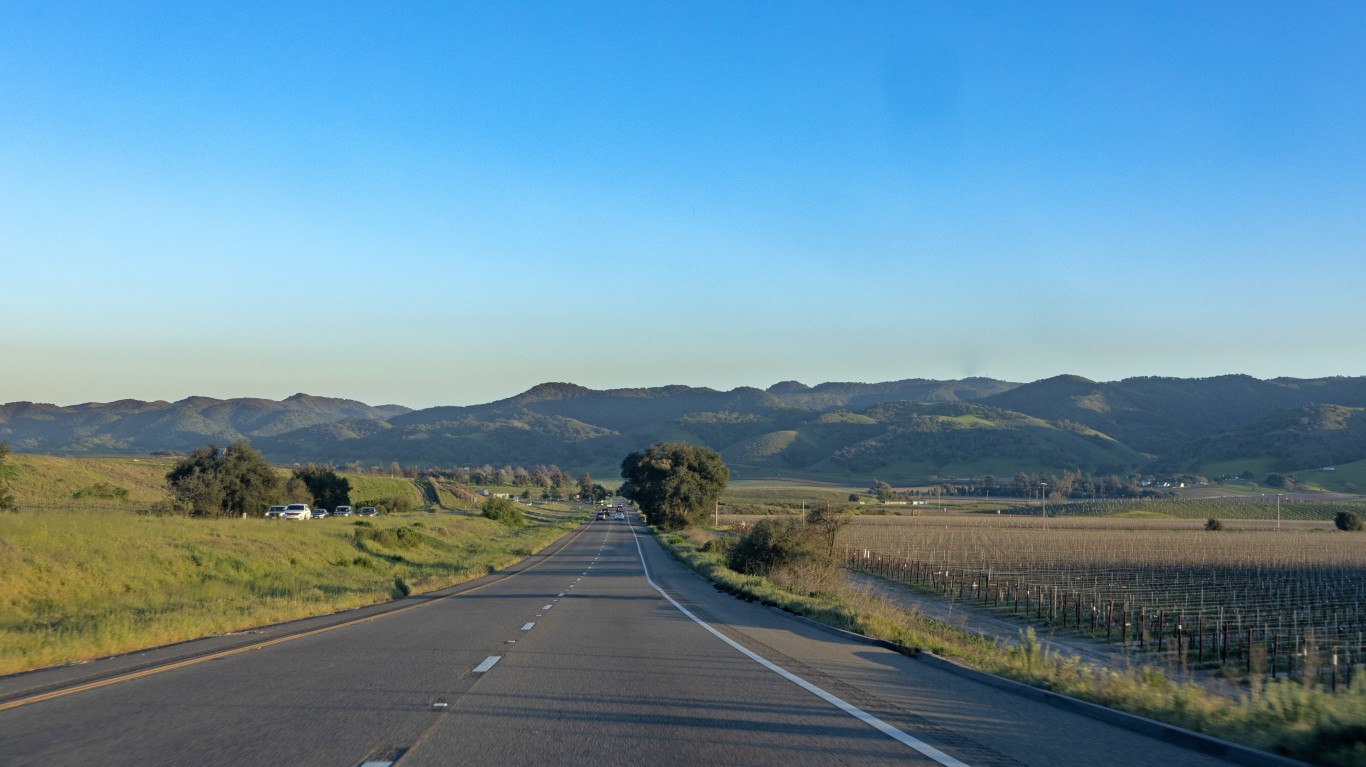
California: Santa Maria-Santa Barbara
> Avg. commute time (minutes): 20.6 (California: 29.8)
> Share of commuters driving alone: 68.1% (California: 72.1%)
> Share of commuters carpooling: 13.1% (California: 10.0%)
> Share of commuters using public transit: 2.9% (California: 4.6%)
> No. of metros considered in ranking: 26
Colorado: Grand Junction
> Avg. commute time (minutes): 18.9 (Colorado: 25.8)
> Share of commuters driving alone: 77.0% (Colorado: 72.9%)
> Share of commuters carpooling: 8.3% (Colorado: 8.6%)
> Share of commuters using public transit: 0.5% (Colorado: 2.8%)
> No. of metros considered in ranking: 7
[in-text-ad]
Connecticut: Norwich-New London
> Avg. commute time (minutes): 24.2 (Connecticut: 26.7)
> Share of commuters driving alone: 78.7% (Connecticut: 76.3%)
> Share of commuters carpooling: 8.6% (Connecticut: 7.8%)
> Share of commuters using public transit: 1.5% (Connecticut: 4.4%)
> No. of metros considered in ranking: 4
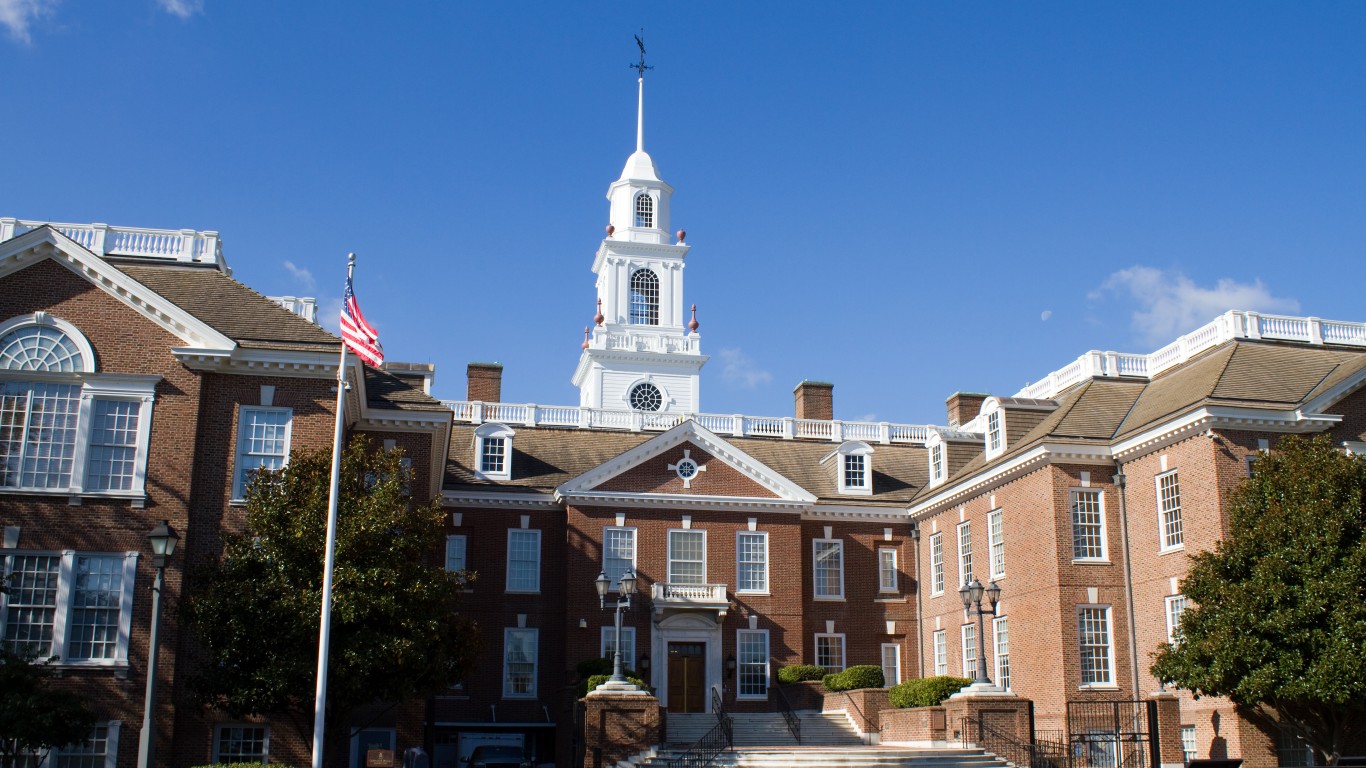
Delaware: Dover
> Avg. commute time (minutes): 26.3 (Delaware: 26.2)
> Share of commuters driving alone: 81.2% (Delaware: 78.8%)
> Share of commuters carpooling: 9.5% (Delaware: 8.6%)
> Share of commuters using public transit: 0.8% (Delaware: 2.2%)
> No. of metros considered in ranking: 1
*Because Dover is the only eligible metro in Delaware, it is the metro with the shortest average commute time by default.
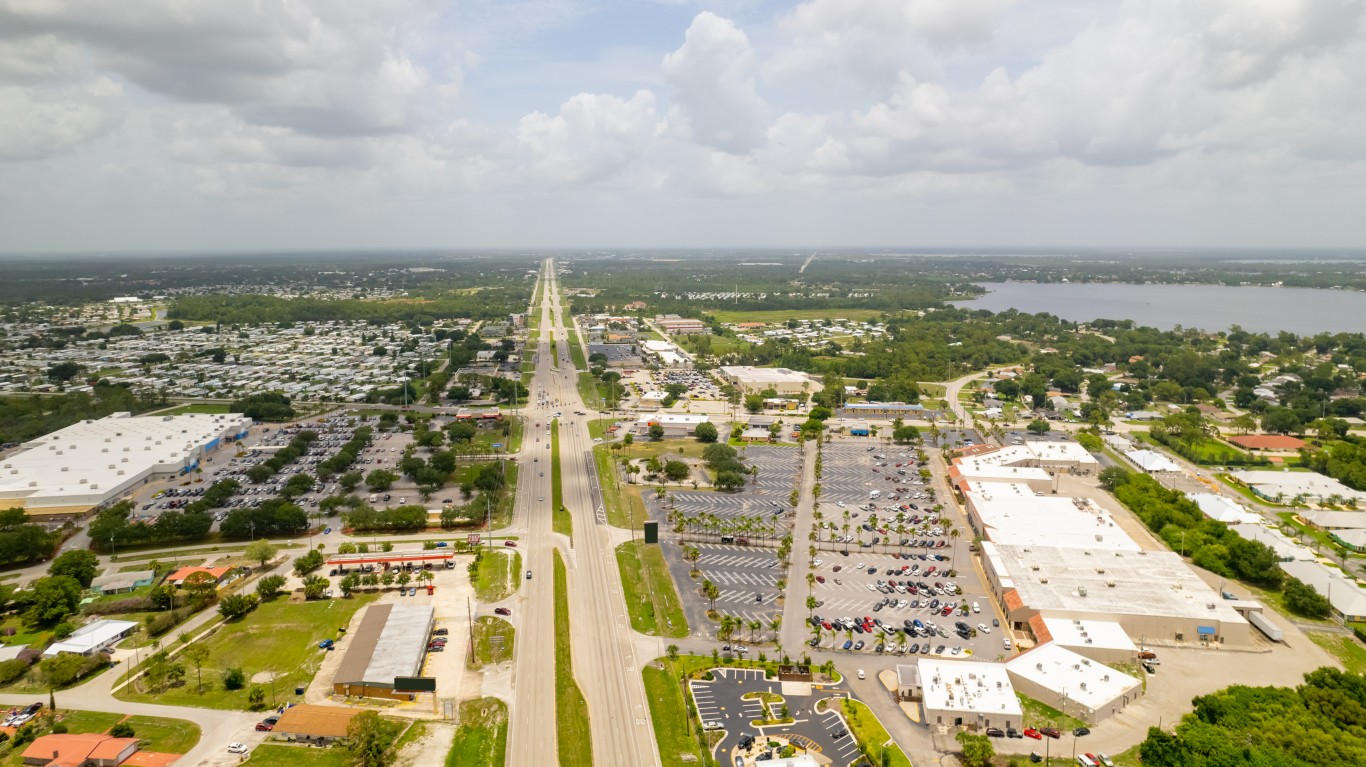
Florida: Sebring-Avon Park
> Avg. commute time (minutes): 20.6 (Florida: 27.9)
> Share of commuters driving alone: 79.4% (Florida: 77.7%)
> Share of commuters carpooling: 10.3% (Florida: 9.2%)
> Share of commuters using public transit: 0.7% (Florida: 1.6%)
> No. of metros considered in ranking: 22
[in-text-ad-2]
Georgia: Valdosta
> Avg. commute time (minutes): 20.4 (Georgia: 28.7)
> Share of commuters driving alone: 82.8% (Georgia: 77.7%)
> Share of commuters carpooling: 9.3% (Georgia: 9.3%)
> Share of commuters using public transit: 0.3% (Georgia: 1.9%)
> No. of metros considered in ranking: 14

Hawaii: Kahului-Wailuku-Lahaina
> Avg. commute time (minutes): 21.7 (Hawaii: 27.1)
> Share of commuters driving alone: 74.4% (Hawaii: 67.6%)
> Share of commuters carpooling: 12.7% (Hawaii: 13.4%)
> Share of commuters using public transit: 2.2% (Hawaii: 5.5%)
> No. of metros considered in ranking: 2
[in-text-ad]

Idaho: Lewiston
> Avg. commute time (minutes): 17.0 (Idaho: 21.2)
> Share of commuters driving alone: 80.5% (Idaho: 77.8%)
> Share of commuters carpooling: 8.1% (Idaho: 9.3%)
> Share of commuters using public transit: 0.5% (Idaho: 0.6%)
> No. of metros considered in ranking: 6

Illinois: Champaign-Urbana
> Avg. commute time (minutes): 18.0 (Illinois: 29.0)
> Share of commuters driving alone: 71.2% (Illinois: 71.5%)
> Share of commuters carpooling: 7.8% (Illinois: 7.8%)
> Share of commuters using public transit: 5.0% (Illinois: 8.8%)
> No. of metros considered in ranking: 10
Indiana: Kokomo
> Avg. commute time (minutes): 18.8 (Indiana: 23.9)
> Share of commuters driving alone: 83.3% (Indiana: 81.3%)
> Share of commuters carpooling: 9.2% (Indiana: 9.0%)
> Share of commuters using public transit: 0.2% (Indiana: 0.9%)
> No. of metros considered in ranking: 12
[in-text-ad-2]

Iowa: Dubuque
> Avg. commute time (minutes): 16.4 (Iowa: 19.5)
> Share of commuters driving alone: 81.6% (Iowa: 80.2%)
> Share of commuters carpooling: 7.3% (Iowa: 8.0%)
> Share of commuters using public transit: 0.9% (Iowa: 0.9%)
> No. of metros considered in ranking: 8

Kansas: Manhattan
> Avg. commute time (minutes): 17.4 (Kansas: 19.6)
> Share of commuters driving alone: 74.9% (Kansas: 80.7%)
> Share of commuters carpooling: 10.2% (Kansas: 8.9%)
> Share of commuters using public transit: 0.2% (Kansas: 0.4%)
> No. of metros considered in ranking: 4
[in-text-ad]

Kentucky: Owensboro
> Avg. commute time (minutes): 20.4 (Kentucky: 23.7)
> Share of commuters driving alone: 86.2% (Kentucky: 81.2%)
> Share of commuters carpooling: 7.6% (Kentucky: 9.2%)
> Share of commuters using public transit: 0.4% (Kentucky: 0.9%)
> No. of metros considered in ranking: 5

Louisiana: Shreveport-Bossier City
> Avg. commute time (minutes): 21.5 (Louisiana: 25.8)
> Share of commuters driving alone: 84.5% (Louisiana: 81.9%)
> Share of commuters carpooling: 8.1% (Louisiana: 9.0%)
> Share of commuters using public transit: 1.2% (Louisiana: 1.1%)
> No. of metros considered in ranking: 9

Maine: Bangor
> Avg. commute time (minutes): 22.4 (Maine: 24.3)
> Share of commuters driving alone: 79.4% (Maine: 77.2%)
> Share of commuters carpooling: 8.8% (Maine: 9.2%)
> Share of commuters using public transit: 0.4% (Maine: 0.5%)
> No. of metros considered in ranking: 3
[in-text-ad-2]
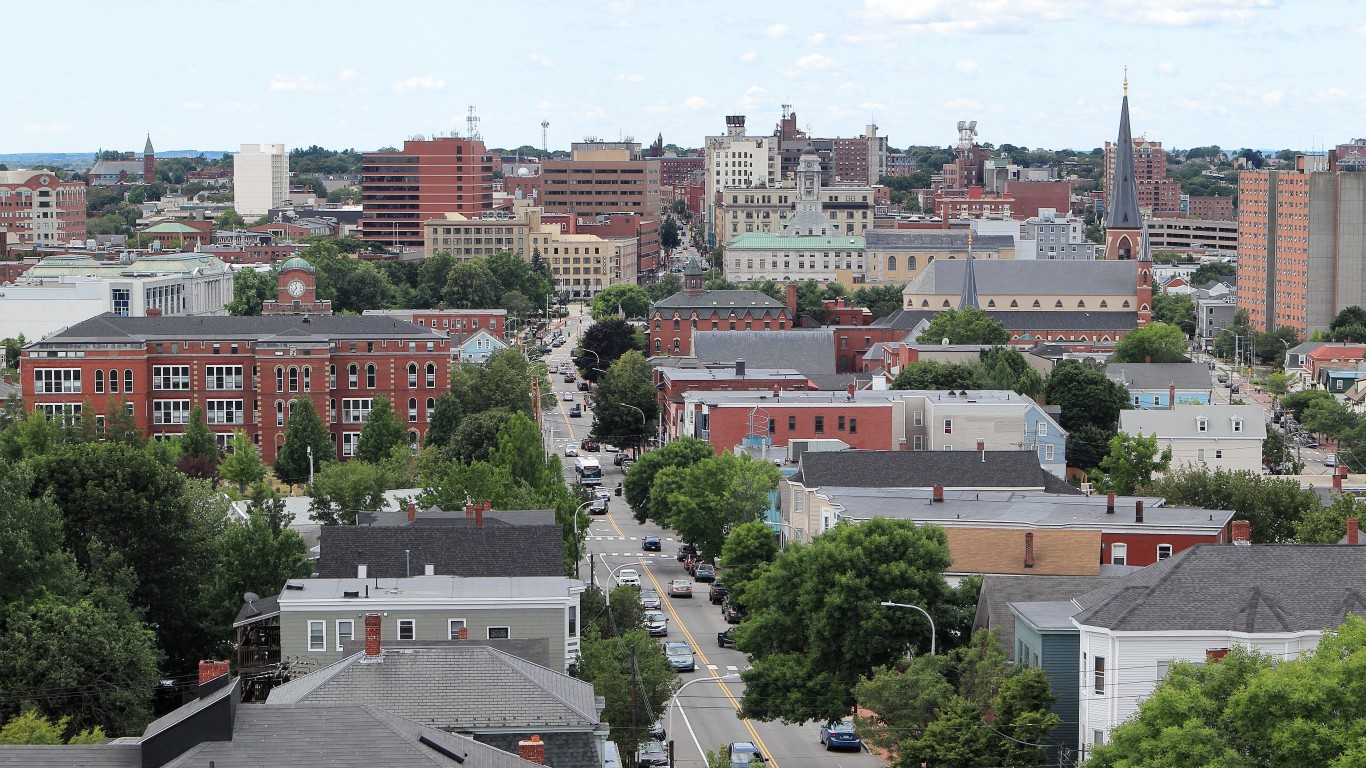
Maryland: Cumberland
> Avg. commute time (minutes): 23.8 (Maryland: 33.0)
> Share of commuters driving alone: 82.5% (Maryland: 72.1%)
> Share of commuters carpooling: 8.6% (Maryland: 8.6%)
> Share of commuters using public transit: 0.7% (Maryland: 7.4%)
> No. of metros considered in ranking: 5

Massachusetts: Pittsfield
> Avg. commute time (minutes): 20.4 (Massachusetts: 30.0)
> Share of commuters driving alone: 76.9% (Massachusetts: 68.0%)
> Share of commuters carpooling: 7.9% (Massachusetts: 7.3%)
> Share of commuters using public transit: 1.1% (Massachusetts: 9.5%)
> No. of metros considered in ranking: 5
[in-text-ad]
Michigan: Niles
> Avg. commute time (minutes): 20.2 (Michigan: 24.6)
> Share of commuters driving alone: 80.7% (Michigan: 80.7%)
> Share of commuters carpooling: 9.5% (Michigan: 8.6%)
> Share of commuters using public transit: 0.6% (Michigan: 1.3%)
> No. of metros considered in ranking: 14

Minnesota: Mankato
> Avg. commute time (minutes): 18.1 (Minnesota: 23.8)
> Share of commuters driving alone: 77.9% (Minnesota: 76.0%)
> Share of commuters carpooling: 7.9% (Minnesota: 8.1%)
> Share of commuters using public transit: 1.3% (Minnesota: 3.2%)
> No. of metros considered in ranking: 5

Mississippi: Hattiesburg
> Avg. commute time (minutes): 24.1 (Mississippi: 25.2)
> Share of commuters driving alone: 82.9% (Mississippi: 84.6%)
> Share of commuters carpooling: 8.3% (Mississippi: 9.2%)
> Share of commuters using public transit: 0.3% (Mississippi: 0.3%)
> No. of metros considered in ranking: 3
[in-text-ad-2]

Missouri: St. Joseph
> Avg. commute time (minutes): 19.1 (Missouri: 23.9)
> Share of commuters driving alone: 83.4% (Missouri: 80.8%)
> Share of commuters carpooling: 9.1% (Missouri: 8.4%)
> Share of commuters using public transit: 0.5% (Missouri: 1.2%)
> No. of metros considered in ranking: 8

Montana: Great Falls
> Avg. commute time (minutes): 16.5 (Montana: 18.4)
> Share of commuters driving alone: 81.0% (Montana: 75.2%)
> Share of commuters carpooling: 9.5% (Montana: 9.2%)
> Share of commuters using public transit: 0.8% (Montana: 0.7%)
> No. of metros considered in ranking: 3
[in-text-ad]

Nebraska: Grand Island
> Avg. commute time (minutes): 18.3 (Nebraska: 18.9)
> Share of commuters driving alone: 83.5% (Nebraska: 80.7%)
> Share of commuters carpooling: 10.8% (Nebraska: 9.0%)
> Share of commuters using public transit: 0.3% (Nebraska: 0.6%)
> No. of metros considered in ranking: 3
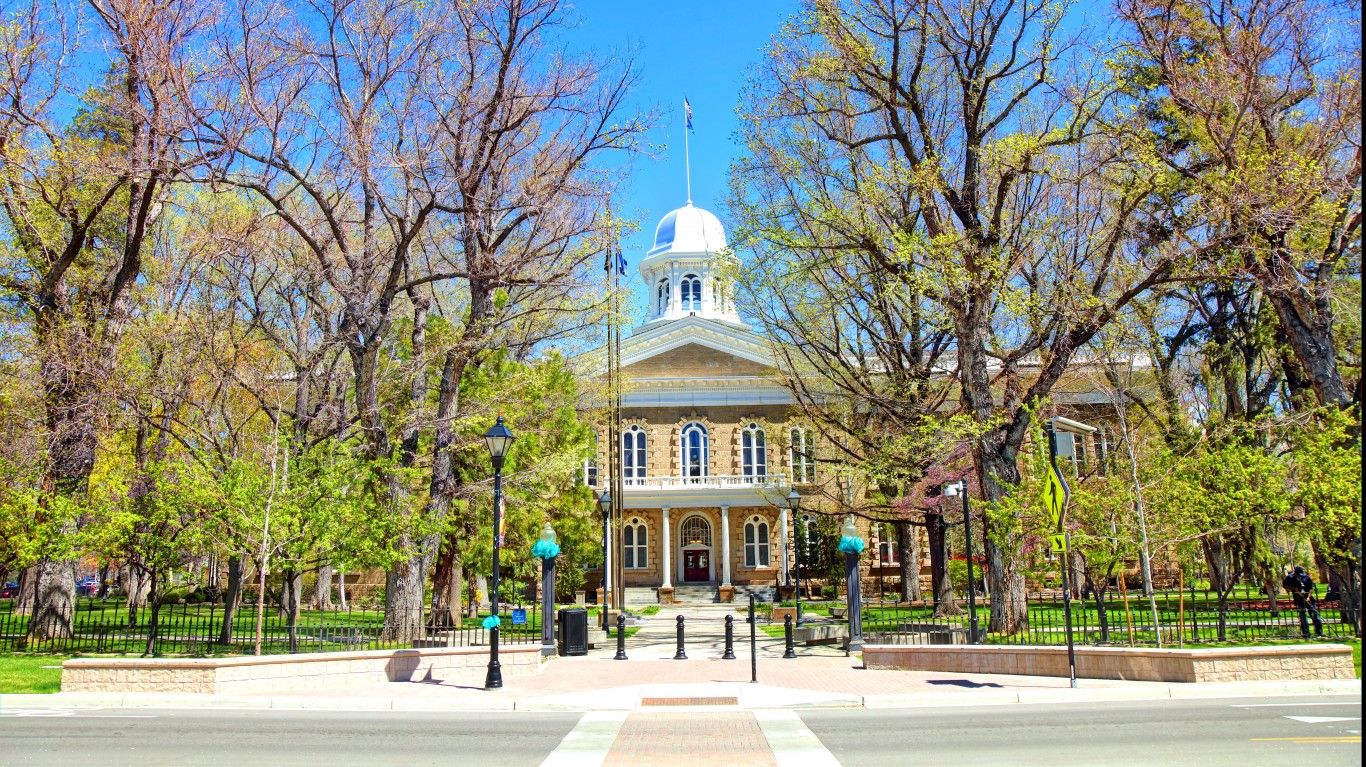
Nevada: Carson City
> Avg. commute time (minutes): 20.0 (Nevada: 24.6)
> Share of commuters driving alone: 79.4% (Nevada: 76.8%)
> Share of commuters carpooling: 11.5% (Nevada: 10.6%)
> Share of commuters using public transit: 0.7% (Nevada: 2.9%)
> No. of metros considered in ranking: 3

New Hampshire: Manchester-Nashua
> Avg. commute time (minutes): 28.0 (New Hampshire: 27.4)
> Share of commuters driving alone: 80.3% (New Hampshire: 79.5%)
> Share of commuters carpooling: 7.4% (New Hampshire: 7.7%)
> Share of commuters using public transit: 0.8% (New Hampshire: 0.8%)
> No. of metros considered in ranking: 1
*Because Manchester-Nashua is the only eligible metro in New Hampshire, it is the metro with the shortest average commute time by default.
[in-text-ad-2]
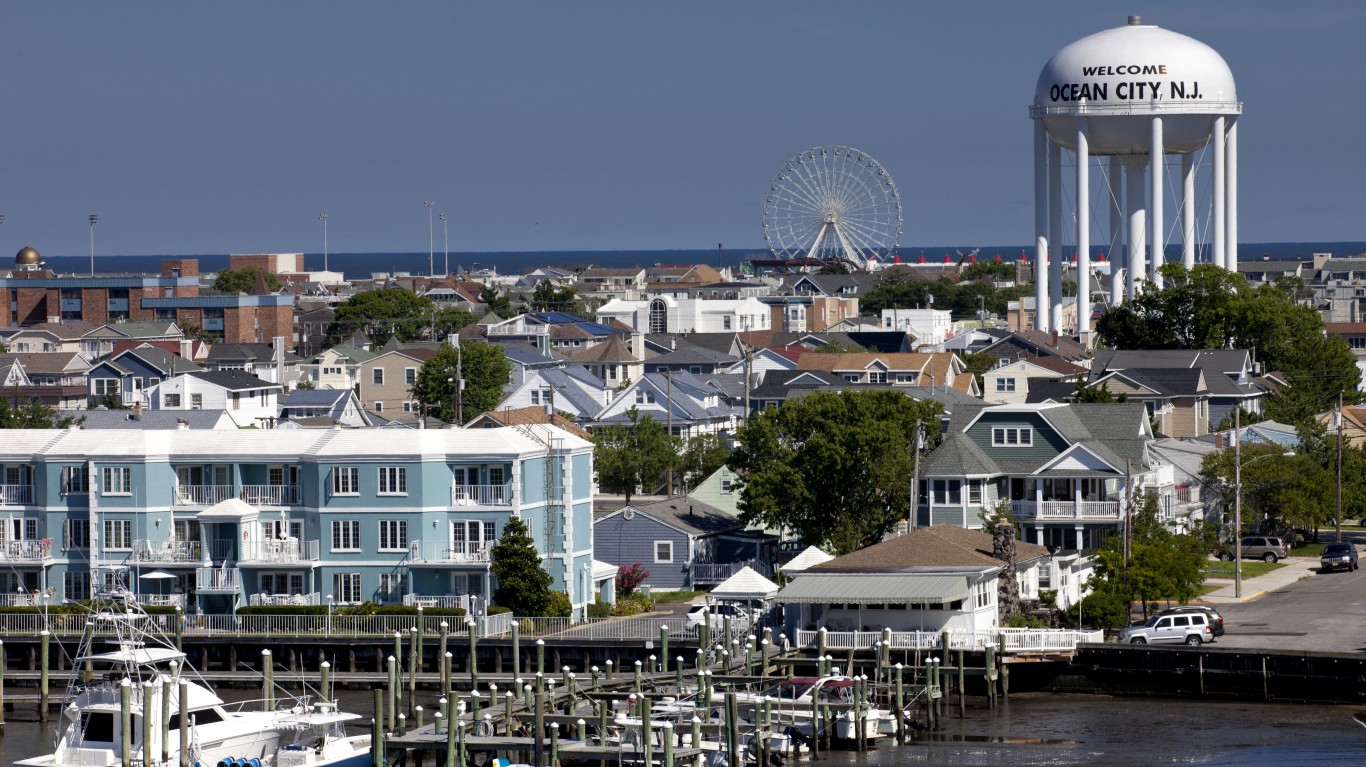
New Jersey: Ocean City
> Avg. commute time (minutes): 22.3 (New Jersey: 32.0)
> Share of commuters driving alone: 79.3% (New Jersey: 69.6%)
> Share of commuters carpooling: 7.8% (New Jersey: 7.8%)
> Share of commuters using public transit: 1.4% (New Jersey: 10.8%)
> No. of metros considered in ranking: 4
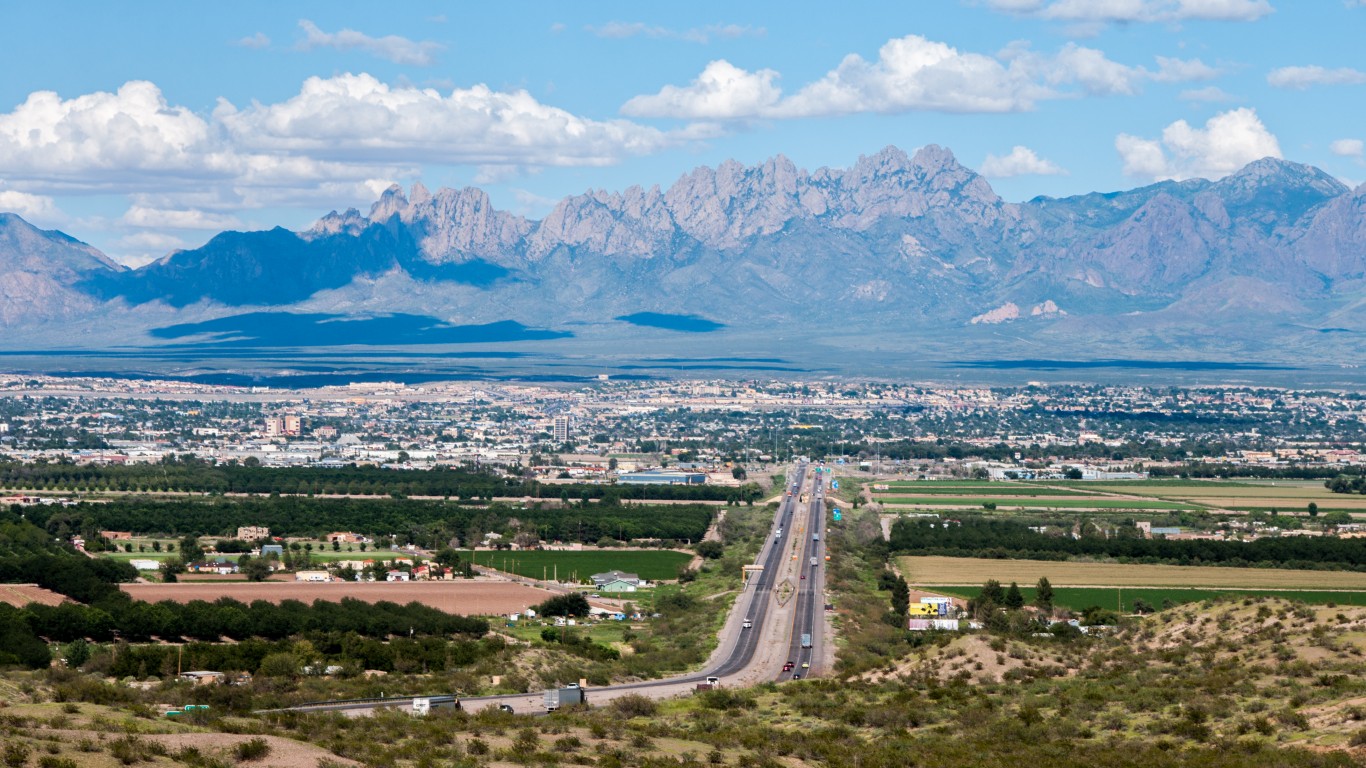
New Mexico: Las Cruces
> Avg. commute time (minutes): 22.5 (New Mexico: 22.7)
> Share of commuters driving alone: 79.2% (New Mexico: 79.1%)
> Share of commuters carpooling: 11.2% (New Mexico: 10.0%)
> Share of commuters using public transit: 0.4% (New Mexico: 1.0%)
> No. of metros considered in ranking: 4
[in-text-ad]

New York: Watertown-Fort Drum
> Avg. commute time (minutes): 18.8 (New York: 33.5)
> Share of commuters driving alone: 77.7% (New York: 52.3%)
> Share of commuters carpooling: 8.3% (New York: 6.4%)
> Share of commuters using public transit: 0.6% (New York: 26.2%)
> No. of metros considered in ranking: 13
North Carolina: Jacksonville
> Avg. commute time (minutes): 20.8 (North Carolina: 24.9)
> Share of commuters driving alone: 72.2% (North Carolina: 79.3%)
> Share of commuters carpooling: 12.8% (North Carolina: 9.0%)
> Share of commuters using public transit: 0.5% (North Carolina: 1.0%)
> No. of metros considered in ranking: 15

North Dakota: Grand Forks
> Avg. commute time (minutes): 15.7 (North Dakota: 17.6)
> Share of commuters driving alone: 81.0% (North Dakota: 80.8%)
> Share of commuters carpooling: 8.2% (North Dakota: 8.9%)
> Share of commuters using public transit: 0.9% (North Dakota: 0.5%)
> No. of metros considered in ranking: 3
[in-text-ad-2]

Ohio: Lima
> Avg. commute time (minutes): 19.3 (Ohio: 23.7)
> Share of commuters driving alone: 84.9% (Ohio: 81.5%)
> Share of commuters carpooling: 7.3% (Ohio: 7.6%)
> Share of commuters using public transit: 0.7% (Ohio: 1.4%)
> No. of metros considered in ranking: 11
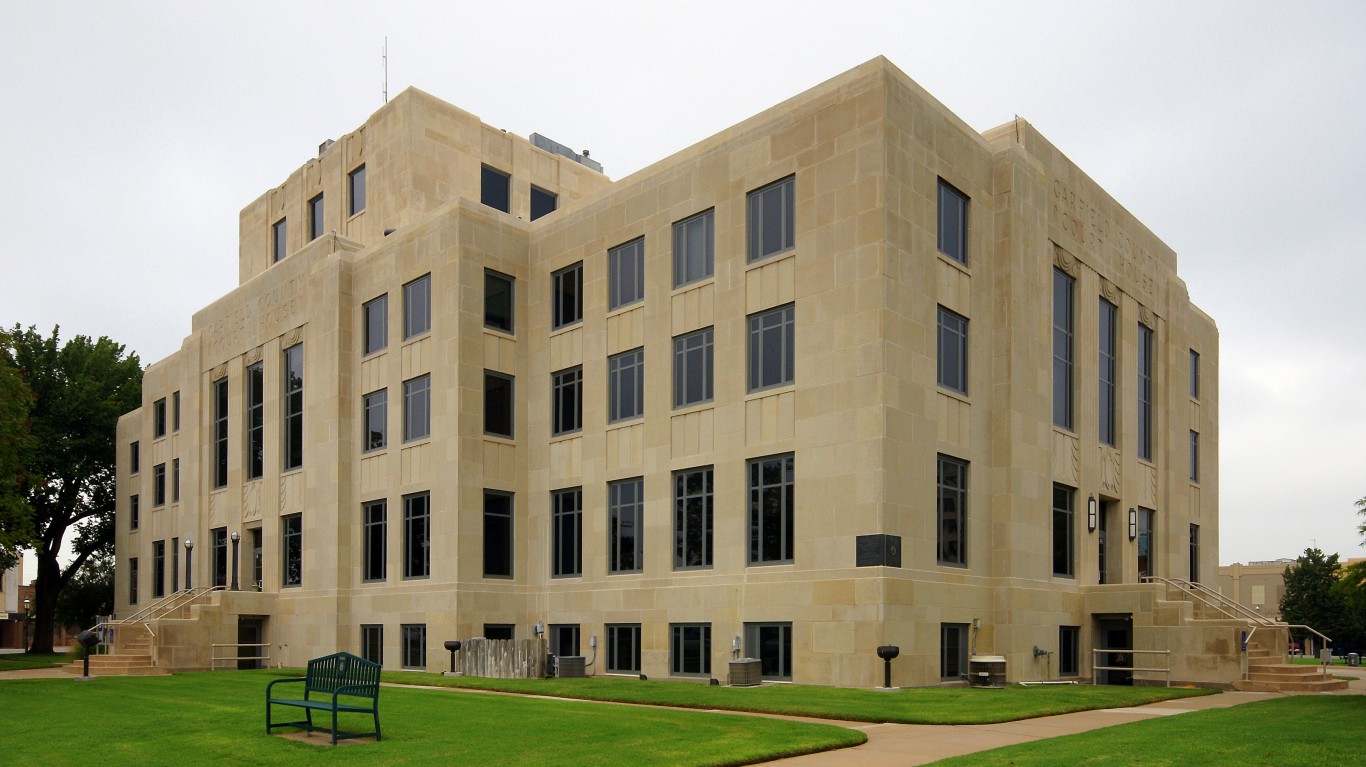
Oklahoma: Enid
> Avg. commute time (minutes): 17.9 (Oklahoma: 22.0)
> Share of commuters driving alone: 79.4% (Oklahoma: 81.6%)
> Share of commuters carpooling: 13.0% (Oklahoma: 9.7%)
> Share of commuters using public transit: 0.4% (Oklahoma: 0.4%)
> No. of metros considered in ranking: 4
[in-text-ad]

Oregon: Medford
> Avg. commute time (minutes): 19.0 (Oregon: 23.9)
> Share of commuters driving alone: 76.8% (Oregon: 70.5%)
> Share of commuters carpooling: 8.8% (Oregon: 9.4%)
> Share of commuters using public transit: 0.7% (Oregon: 4.0%)
> No. of metros considered in ranking: 8

Pennsylvania: Erie
> Avg. commute time (minutes): 19.8 (Pennsylvania: 27.1)
> Share of commuters driving alone: 78.5% (Pennsylvania: 74.4%)
> Share of commuters carpooling: 10.7% (Pennsylvania: 8.2%)
> Share of commuters using public transit: 1.5% (Pennsylvania: 5.2%)
> No. of metros considered in ranking: 18

Rhode Island: Providence-Warwick
> Avg. commute time (minutes): 26.4 (Rhode Island: 25.3)
> Share of commuters driving alone: 79.8% (Rhode Island: 79.7%)
> Share of commuters carpooling: 8.2% (Rhode Island: 8.1%)
> Share of commuters using public transit: 2.3% (Rhode Island: 2.2%)
> No. of metros considered in ranking: 1
*Because Providence-Warwick is the only eligible metro in Rhode Island, it is the metro with the shortest average commute time by default.
[in-text-ad-2]
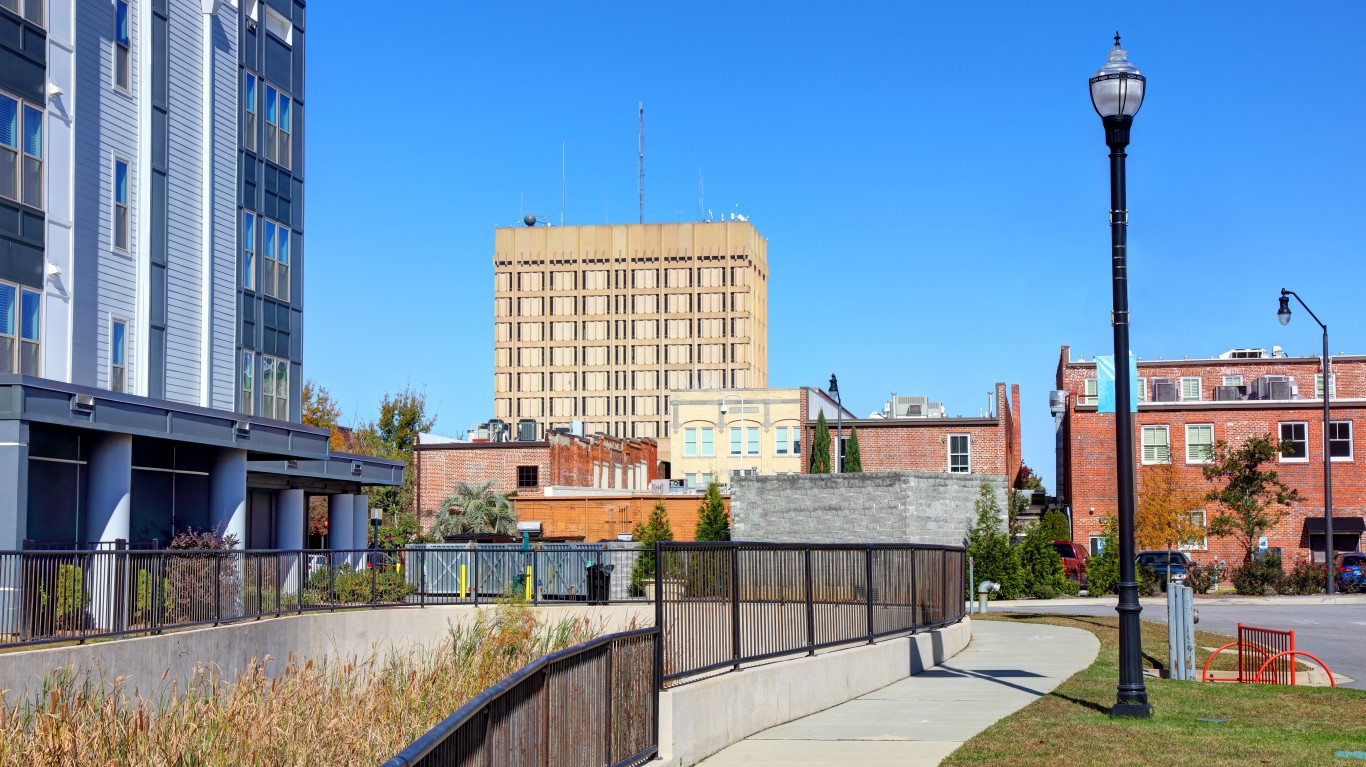
South Carolina: Florence
> Avg. commute time (minutes): 22.8 (South Carolina: 25.1)
> Share of commuters driving alone: 84.0% (South Carolina: 81.5%)
> Share of commuters carpooling: 9.5% (South Carolina: 8.9%)
> Share of commuters using public transit: 0.2% (South Carolina: 0.5%)
> No. of metros considered in ranking: 8

South Dakota: Sioux Falls
> Avg. commute time (minutes): 18.4 (South Dakota: 17.3)
> Share of commuters driving alone: 83.3% (South Dakota: 80.0%)
> Share of commuters carpooling: 7.7% (South Dakota: 8.1%)
> Share of commuters using public transit: 0.4% (South Dakota: 0.5%)
> No. of metros considered in ranking: 2
[in-text-ad]

Tennessee: Jackson
> Avg. commute time (minutes): 21.4 (Tennessee: 25.4)
> Share of commuters driving alone: 83.3% (Tennessee: 81.9%)
> Share of commuters carpooling: 8.6% (Tennessee: 8.8%)
> Share of commuters using public transit: 0.3% (Tennessee: 0.6%)
> No. of metros considered in ranking: 10
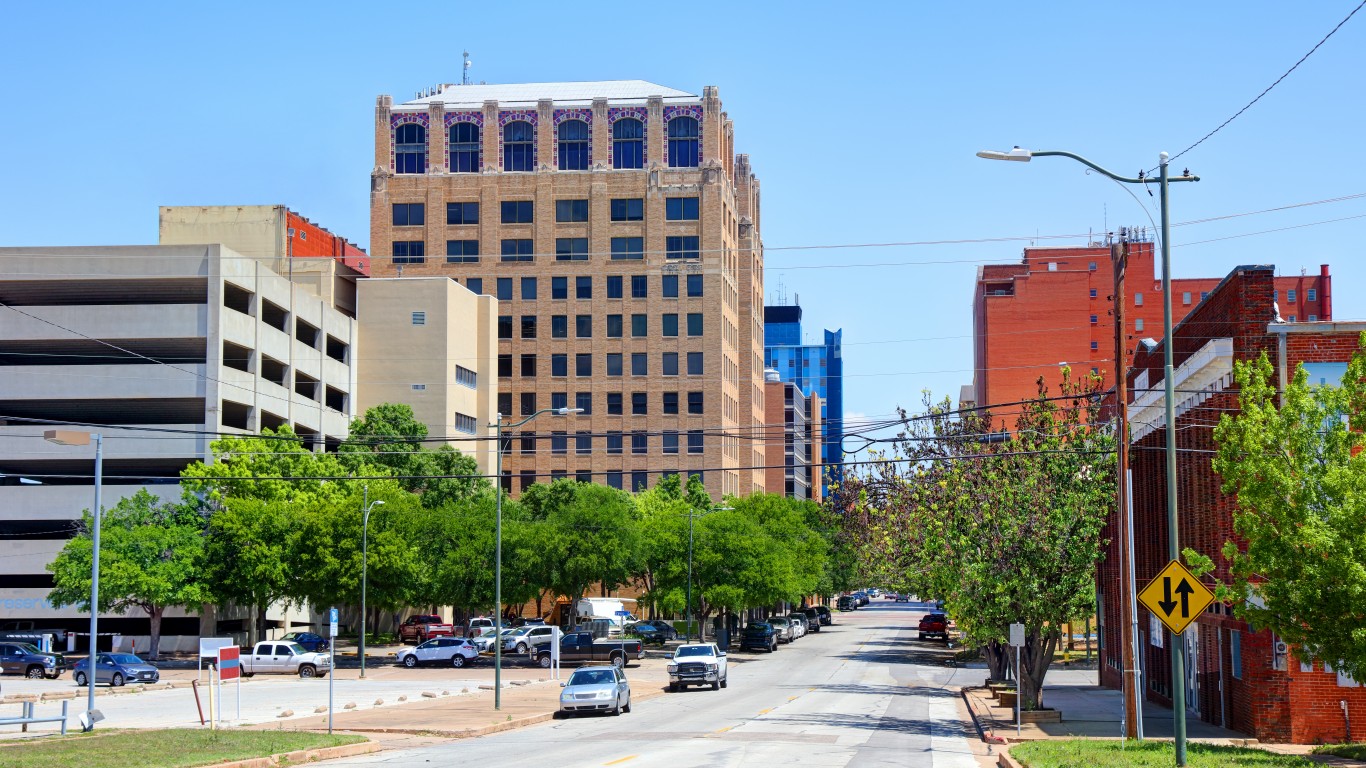
Texas: Wichita Falls
> Avg. commute time (minutes): 16.5 (Texas: 26.6)
> Share of commuters driving alone: 76.3% (Texas: 78.7%)
> Share of commuters carpooling: 9.6% (Texas: 9.9%)
> Share of commuters using public transit: 0.4% (Texas: 1.3%)
> No. of metros considered in ranking: 25

Utah: St. George
> Avg. commute time (minutes): 17.7 (Utah: 22.0)
> Share of commuters driving alone: 77.1% (Utah: 74.4%)
> Share of commuters carpooling: 9.7% (Utah: 10.4%)
> Share of commuters using public transit: 0.3% (Utah: 2.2%)
> No. of metros considered in ranking: 5
[in-text-ad-2]

Vermont: Burlington-South Burlington
> Avg. commute time (minutes): 22.8 (Vermont: 23.3)
> Share of commuters driving alone: 72.6% (Vermont: 74.4%)
> Share of commuters carpooling: 8.3% (Vermont: 8.5%)
> Share of commuters using public transit: 2.1% (Vermont: 1.2%)
> No. of metros considered in ranking: 1
*Because Burlington-South Burlington is the only eligible metro in Vermont, it is the metro with the shortest average commute time by default.

Virginia: Harrisonburg
> Avg. commute time (minutes): 19.8 (Virginia: 28.6)
> Share of commuters driving alone: 77.0% (Virginia: 74.9%)
> Share of commuters carpooling: 10.5% (Virginia: 8.9%)
> Share of commuters using public transit: 0.7% (Virginia: 4.0%)
> No. of metros considered in ranking: 9
[in-text-ad]

Washington: Walla Walla
> Avg. commute time (minutes): 15.8 (Washington: 28.0)
> Share of commuters driving alone: 71.8% (Washington: 69.7%)
> Share of commuters carpooling: 9.8% (Washington: 9.7%)
> Share of commuters using public transit: 1.0% (Washington: 6.0%)
> No. of metros considered in ranking: 11

West Virginia: Parkersburg-Vienna
> Avg. commute time (minutes): 20.5 (West Virginia: 26.1)
> Share of commuters driving alone: 82.6% (West Virginia: 82.0%)
> Share of commuters carpooling: 9.4% (West Virginia: 8.6%)
> Share of commuters using public transit: 0.8% (West Virginia: 0.8%)
> No. of metros considered in ranking: 7
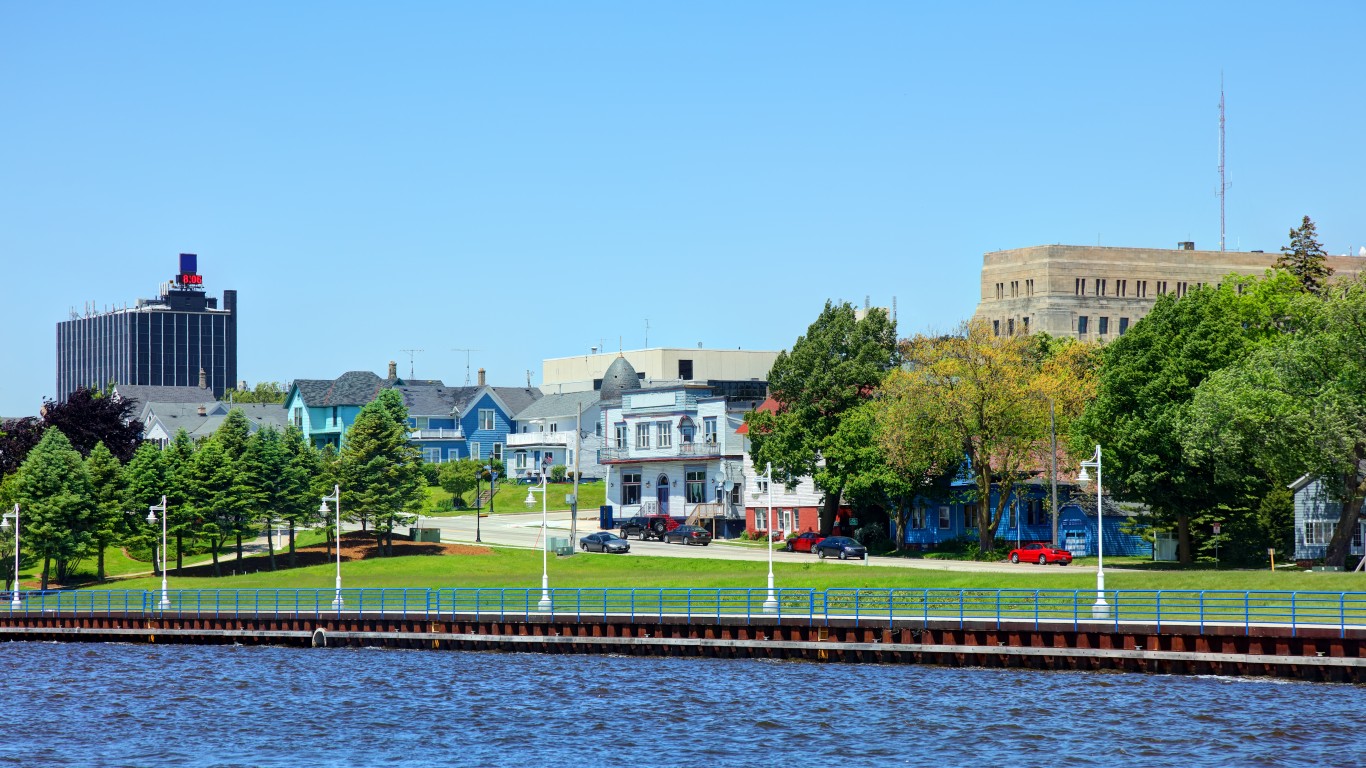
Wisconsin: Sheboygan
> Avg. commute time (minutes): 18.1 (Wisconsin: 22.2)
> Share of commuters driving alone: 83.1% (Wisconsin: 79.9%)
> Share of commuters carpooling: 7.8% (Wisconsin: 7.7%)
> Share of commuters using public transit: 0.4% (Wisconsin: 1.5%)
> No. of metros considered in ranking: 12
[in-text-ad-2]
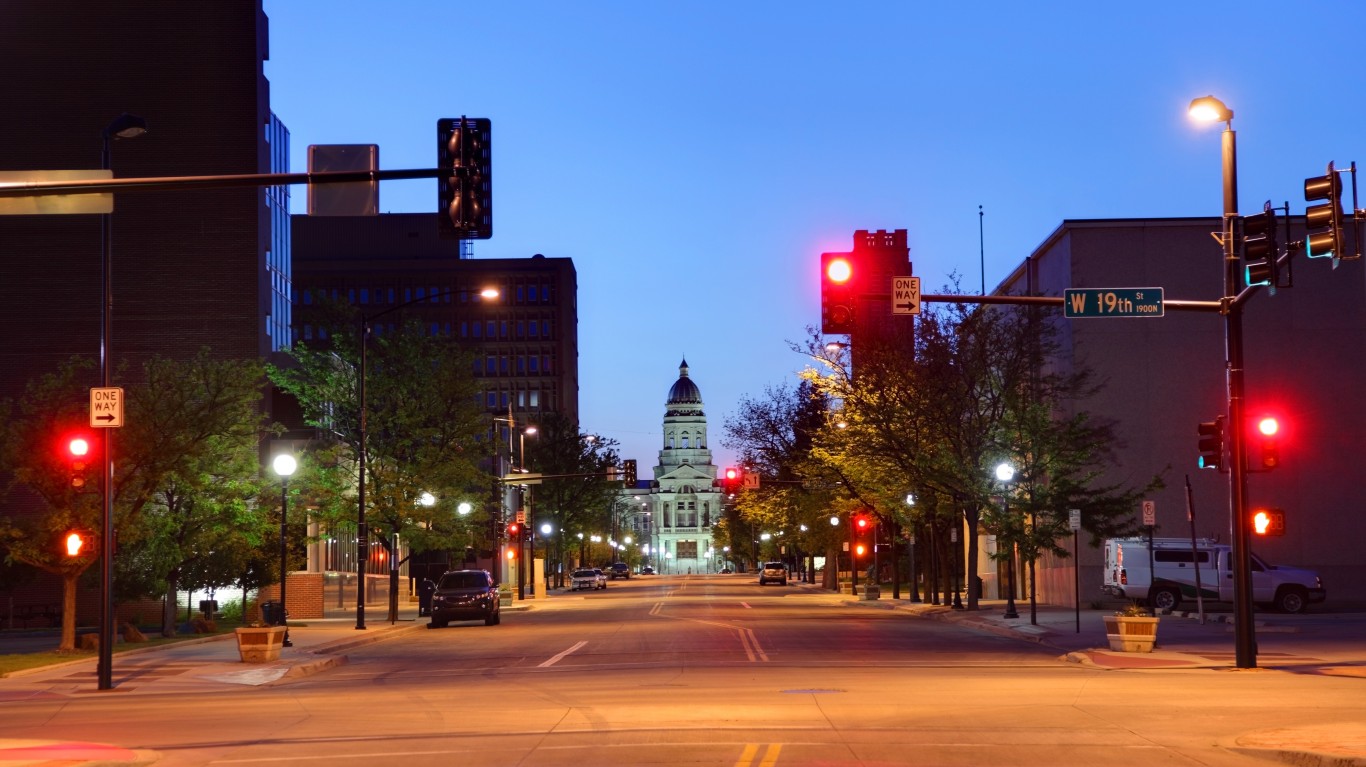
Wyoming: Cheyenne
> Avg. commute time (minutes): 16.4 (Wyoming: 17.9)
> Share of commuters driving alone: 81.2% (Wyoming: 77.4%)
> Share of commuters carpooling: 10.6% (Wyoming: 10.0%)
> Share of commuters using public transit: 0.2% (Wyoming: 1.0%)
> No. of metros considered in ranking: 2
Methodology
To determine the metro area with the shortest commutes in every state, 24/7 Wall St. reviewed five-year estimates of average commute times from the U.S. Census Bureau’s 2020 American Community Survey.
We used the 384 metropolitan statistical areas as delineated by the United States Office of Management and Budget and used by the Census Bureau as our definition of metros.
Metro areas were ranked based on their average commute time. To break ties, we used the share of workers with a commute of 15 minutes or less.
Additional information on the share of commuters driving alone, carpooling, and using public transit are also five-year estimates from the 2020 ACS. Because the Census Bureau didn’t release one-year estimates for 2020 due to data collection issues caused by the COVID-19 pandemic, all ACS data are five-year estimates.
100 Million Americans Are Missing This Crucial Retirement Tool
The thought of burdening your family with a financial disaster is most Americans’ nightmare. However, recent studies show that over 100 million Americans still don’t have proper life insurance in the event they pass away.
Life insurance can bring peace of mind – ensuring your loved ones are safeguarded against unforeseen expenses and debts. With premiums often lower than expected and a variety of plans tailored to different life stages and health conditions, securing a policy is more accessible than ever.
A quick, no-obligation quote can provide valuable insight into what’s available and what might best suit your family’s needs. Life insurance is a simple step you can take today to help secure peace of mind for your loved ones tomorrow.
Click here to learn how to get a quote in just a few minutes.
Thank you for reading! Have some feedback for us?
Contact the 24/7 Wall St. editorial team.
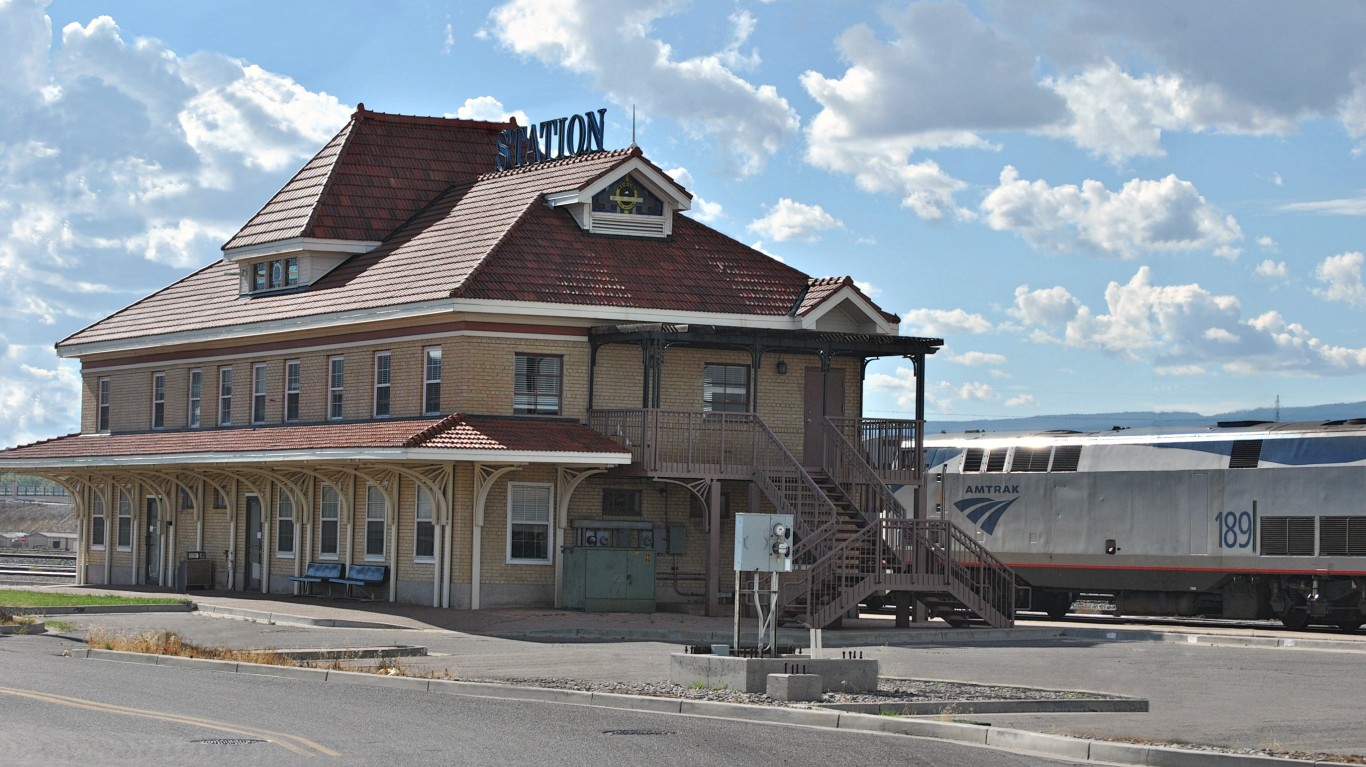
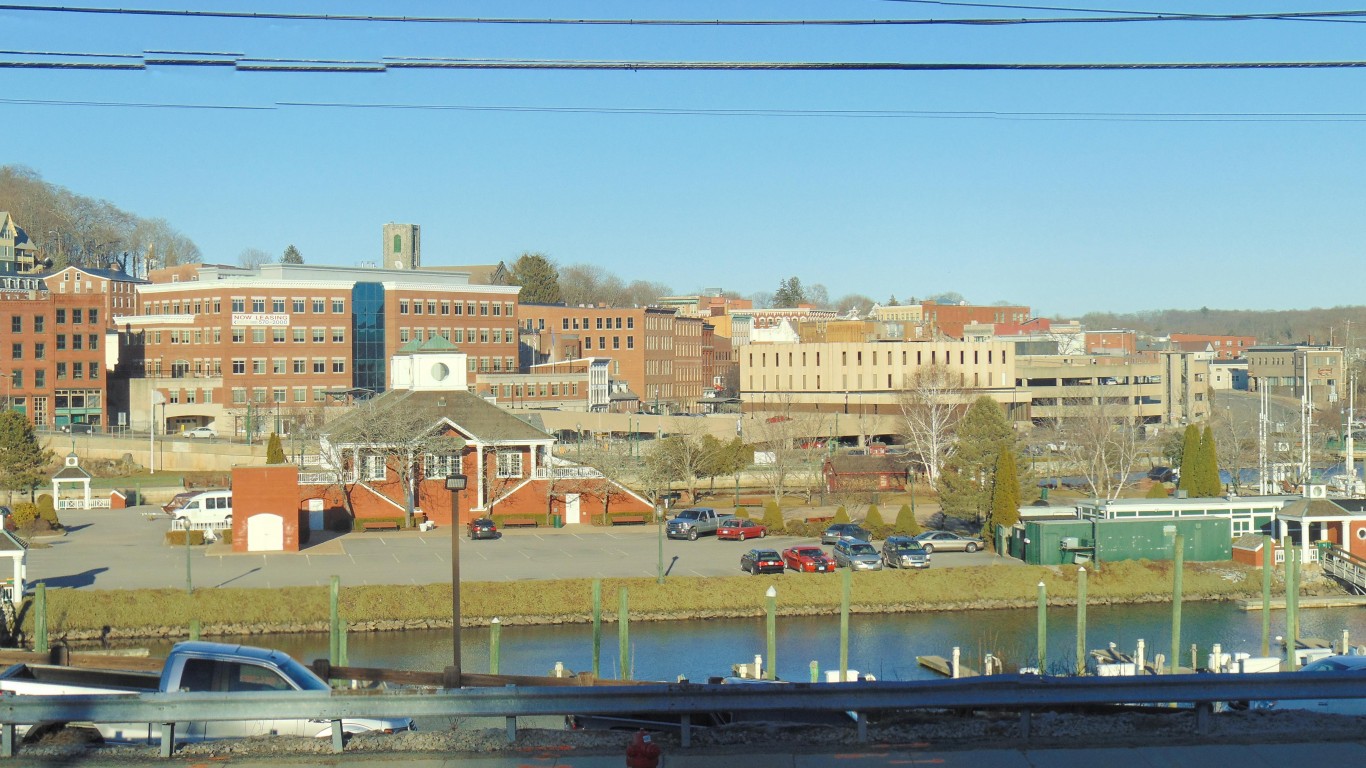



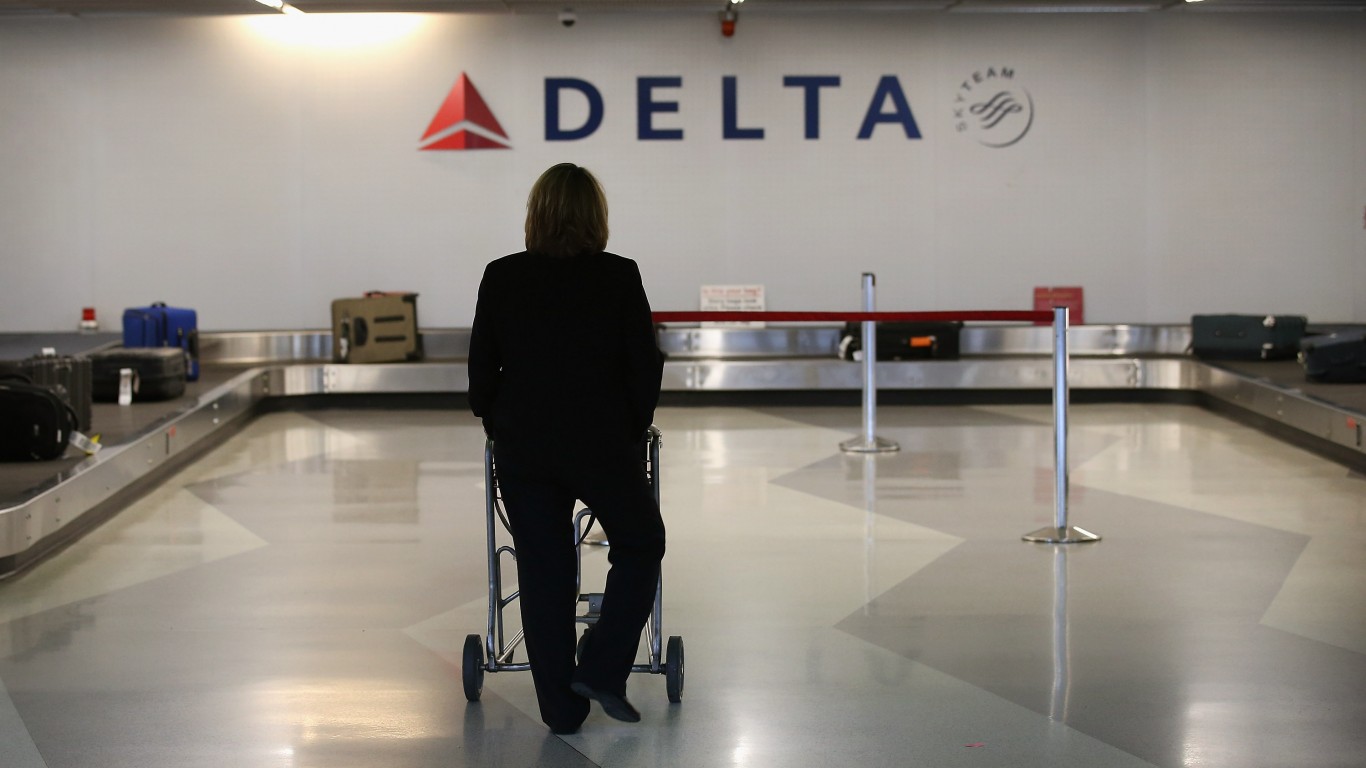 24/7 Wall St.
24/7 Wall St. 24/7 Wall St.
24/7 Wall St.